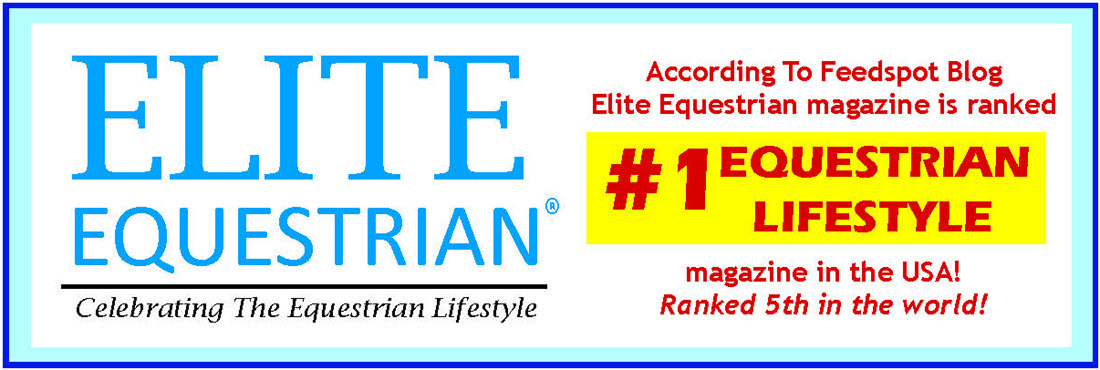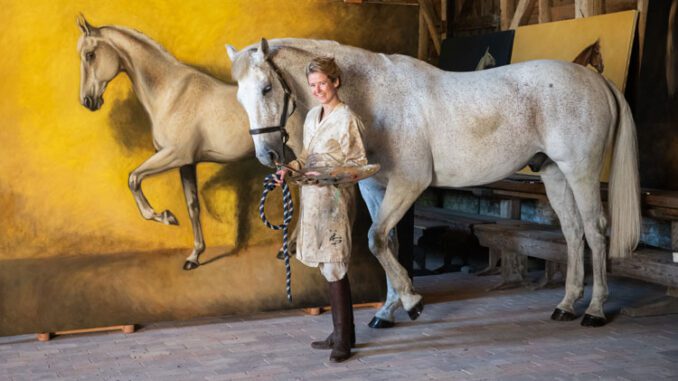
‘The Art of Show Jumping’.
Have you ever thought of how many horses you have seen in your life? The horse is always there, whether it’s in a sports arena in a museum. . Drawings and paintings, sculptures and bas-reliefs, mosaics and photographs. We enjoy seeing horses in a variety of artistic styles and genres throughout many historical periods. The creation of “equestrian portraits” has a lengthy history dating back to pre-historic times. The image of the horse in art has changed over time, so has its symbolic meaning. It started with cave paintings and evolved into the expression of numerous equestrian disciplines.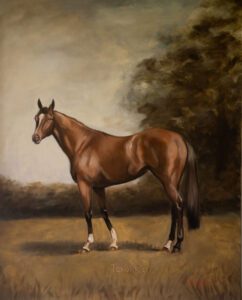
With the Longines FEI Jumping World Cup Final happening this April, we would like to invite you to have a look at show jumping couples in the context of Art.
Show jumping is a sport that has been around for quite a while; an early version of this discipline was featured at the 1900 Olympic Games. After a few years’ absence, the modern version appeared again at the 1912 Olympics, and it has been a fixture ever since.
However, the history of jumping is far older. We need to travel back to to the 16th century when for hunting with horses evolved in Great Britain. The Hunters would gallop over miles and miles of open, common land in chase of the fox.
Things altered dramatically in the 18th century, when the Enclosures Acts caused a big change for horse and rider, who had previously been allowed to move over the countryside without impediment. With the addition of fences and boundaries, riders had to select horses that were capable of jumping in order to continue their sport.
Meanwhile, in the arts, realism propelled the horse to the pinnacle of grandeur. It was now not only admired but painted by the most famous artists of the time, attempting to convey every detail in the most precise manner. Horse racing scenes and their main breeds, the English thoroughbreds, had become common in the artworks of Romantic and Impressionist painters of the 19th century. Edgar Degas, Henri de Toulouse-Lautrec, Théodore Géricault, Benjamin Marshall, James Ward and, of course, George Stubbs were fascinated by the equestrian world. The Whistlejacket, probably the most well-known image of a horse, illustrates that Stubbs perfectly captured the horse’s veins, muscles, and blemishes, as well as its energy and athleticism.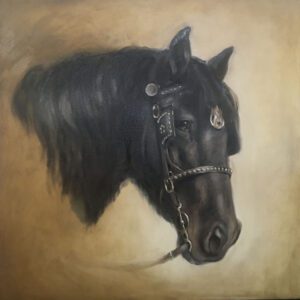
Nonetheless, the image of a horse in contemporary art can still remain classic. Katerina Morgan Horse Polo Art Gallery (https://katerinamorgan.art/) is pleased to share with you the artworks of two brilliant British painters who represent traditional equestrian art.
Madeleine Bunbury paints horses from life in natural light and travels the world to meet her incredible subjects. She studied traditional portraiture in Florence for three years and continues to use her own hand-ground pigments and hand-stretched canvases. With the horses posing in front of her, she is able to capture their distinct personalities while also portraying motion and depth. Painting from life produces an emotional representation that modern photo-realistic paintings cannot equal.
Edward Waites creates bronze and silver sculptures ranging from small models to monumental art. Edward’s representations of animals and wildlife is shaped by his passion for the vitality, energy and grace of his subjects. His approach is very immediate and hands-on. From the beginning of Edward’s career, he has collaborated closely with a foundry in Suffolk, in the East Of England, that casts his creations. Following the ancient lost-wax method, Edward works first in clay, and then casts in bronze and silver in limited editions. This age-old process demands both skill and time, and each commission takes several months to complete, but the result is worth it.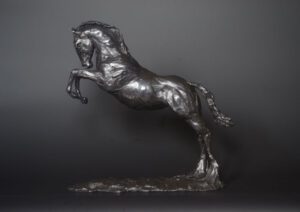
You can find Edward’s and Madeleine’s artworks in a stunning collection of the British Royal family.
Would you like to perpetuate your lovely horse in a form of painting, sculpture, photograph, ceramics or even mosaics and have it always with you at home or in the office? You are welcome to contact Katerina Morgan Horse Polo Art Gallery through the website (https://katerinamorgan.art/) or via social media:
Instagram: https://www.instagram.com/horsepoloartgallery/
Facebook: https://www.facebook.com/horsepoloartgallery
LinkedIn: https://www.linkedin.com/company/horsepoloartgallery/
